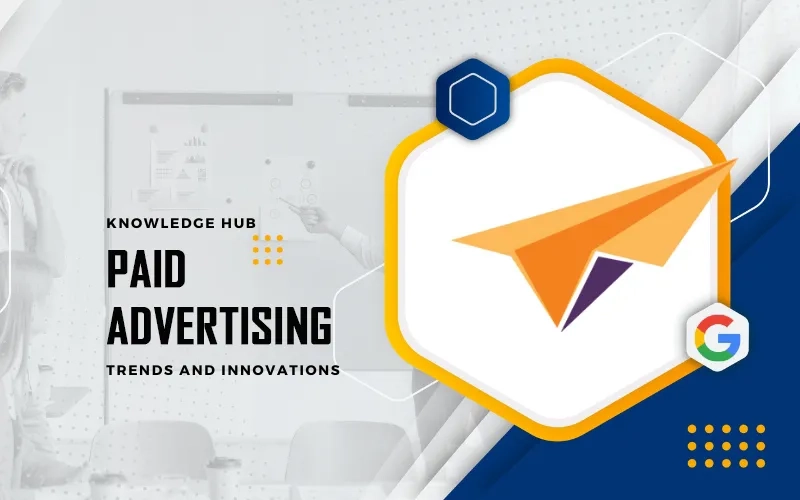Maximize Conversions & ROI: The Best Google Ads Bidding Strategy for Your Goals
By SSMD Pte Ltd, | Posted on February 10, 2024
Table of Contents
- What are bidding strategies in Google Ads?
- Manual vs. smart bidding and automated bidding
- Manual bidding
- Automated bidding
- Smart bidding
- Best 9 Google Ads bidding strategy options
- There are 9 different types of Google Ads bidding strategies for each specific campaign goal:
- Read More: 10 Google Ads Metrics You Need to Track Daily

Brilliant Google Ads Bidding Strategies You Should Know About
Similar to a bidding system, Google Ads bidding allows marketers to place bids based on a variety of criteria, including clicks, impressions, conversions, and views of video ads. Google organizes an auction whenever there is open ad space to determine which advertising will be displayed, taking into account both the quality and bids of the ads.
Manual Vs. Smart Bidding and Automated Bidding Strategies
There are numerous bidding tactics available on Google. For total campaign control, manual bidding may be more appealing to you. But do you know the differences between automated bidding and smart bidding? I’ll give you a quick rundown so you can grasp everything.
Manual Bidding
Manual bidding refers to adjusting bids for individual keywords or ad groups on your own. Maximum amount can be set if you’re willing to bid for your keywords in auctions. A blanket bid can be chosen for an entire ad group or you can set bids for each keyword on an individual level. If you want better control and results than manual bidding, then it ‘s suggested to use shredding your bids by keyword.
Automated Bidding
To use automated bid strategies, machine learning plays a crucial role to optimize bids according to the goals for your campaigns.
Smart Bidding
Smart bidding is an automated strategy in Google Ads that involves machine learning to optimize for conversions or conversion value in each auction, which is known as “auction-time bidding.” Strategies like target ROAS, target CPA, increased conversion value, maximize conversions, and improved CPC are inclusive in smart bidding.
Best Options of Google Ads Bidding Strategy
Let’s unveil the Google Ads bidding strategies for attaining specific goals.
There are 9 distinct types of Google Ads bidding strategies for specific campaign goals:
Manual Cost Per Click (CPC)
Enhanced Cost Per Click (ECPC)
Maximize clicks
Maximize conversions
Maximize conversion value
Target Cost Per Acquisition or CPA
Target Return on Ad Spent or ROAS
Target impression share
Target cost per 1,000 impressions or CPM
1. Manual Cost Per Click
Manual CPC bidding offers a high level of control to the adverisers by allowing bids to be set at keyword level or ad group. The bidding strategy in Google Ads is particularly beneficial fornew accounts, or new campaigns, or new advertisers as it helps in avoiding overspending and enabling close monitoring of performance.
Advantages
Highest level of control
Cost control
Disadvantages
Time and effort
Limited data insights
2. Enhanced Cost Per Click
It’s a smart-bidding setting provided by Google Ads. Enhanced CPC acts as a bridge between full automation and manual bidding. Enhanced CPC offers advantages, including higher click-through rate (CTR) and conversion rate (CVR), by letting Google’s algorithm modify bids according to the likelihood of conversion.
Pros
Improved CTR and CVR
Broader audience reach
Cons
Potential for higher CPC
Lack of bidding control
3. Maximize Clicks
Maximize Clicks is a bidding strategy that focuses on driving numerous clicks possible within your regular budget. It can be advantageous for uplifting website traffic,list building, and branding, especially when you are looking for more volume while having a strong conversion performance.
Pros
Simple and automated
Lower CPCs and higher impression share
Shorter learning period
Efficient for traffic generation
Cons
Potential for lower-quality clicks and conversions:
Not optimized for conversions
4. Maximize Conversions
It is a fully automated bidding strategy focusing on achieving the highest number of conversions within your everyday budget. Google’s algorithm determines the Cost-per-click bid based on the goal of the strategy, focusing on maximizing conversions, with no individual keyword bids set.
Pros
Higher conversion volume
Targeting likely converters
Cons
Lack of bid limit control
Potential increase in CPA or lower ROAS
5. Maximize Conversion Value
Instead of concentrating only on the quantity of conversions, Google Ads’ automatic bidding method called Max Conversion Value seeks to optimize the entire conversion value. This technique aims to maximize return on investment (ROI) by attracting high-value conversions.
Pros
Maximize ROI
Target ROAS guidance
Quality focus
Cons
Value assignment required
Limited data impact
Competitive bidding
6. Target CPA
With target CPA bidding, marketers define a desired cost per conversion and the system automatically modifies bids to target more conversions at the targeted cost. This is an automated Google Ads technique.
Pros
Increased conversions
Efficient spending
Portfolio bid cap
Cons
Limited bid cap control
High budget requirements
7. Target ROAS
In Google AdWords, target ROAS bidding is an automated tactic that maximizes bids to meet a predetermined ROAS objective. It predicts the value of conversion using past conversion data and modifies bids appropriately, trying to maximize income depending on the advertiser’s intended ROAS.
Pros
ROI Focus
Ecommerce optimization
Reaching buying-ready audiences
Cons
Necessary data input
Potential ad spend reduction
Sole focus on ROAS
8. Target impression share
With Google advertising, target impression share bidding is an automated tactic that lets marketers establish a goal for the impression share of their advertising. In order to guarantee that their advertisements show up in a specific proportion of qualified auctions and boost visibility and brand exposure, the system then modifies bids to accomplish that goal.
Pros
Brand visibility
Control over top placement
Cons
Cost considerations
Not directly optimized for conversions
9. Target CPM
With YouTube-only target CPM bidding, marketers determine their average bid for each 1,000 impressions. It aspires to greater awareness and reach while optimizing brand exposure. It costs for every impression, regardless of whether viewers skip or watch the entire advertisement, in contrast to other tactics. Perfect for increasing YouTube brand exposure.
Pros
Brand awareness boost
Cons
Potential for waste
Compelling ad content
Table of Contents
- What are bidding strategies in Google Ads?
- Manual vs. smart bidding and automated bidding
- Manual bidding
- Automated bidding
- Smart bidding
- Best 9 Google Ads bidding strategy options
- There are 9 different types of Google Ads bidding strategies for each specific campaign goal:
- Read More: 10 Google Ads Metrics You Need to Track Daily

 By SSMD Pte Ltd,
By SSMD Pte Ltd,

